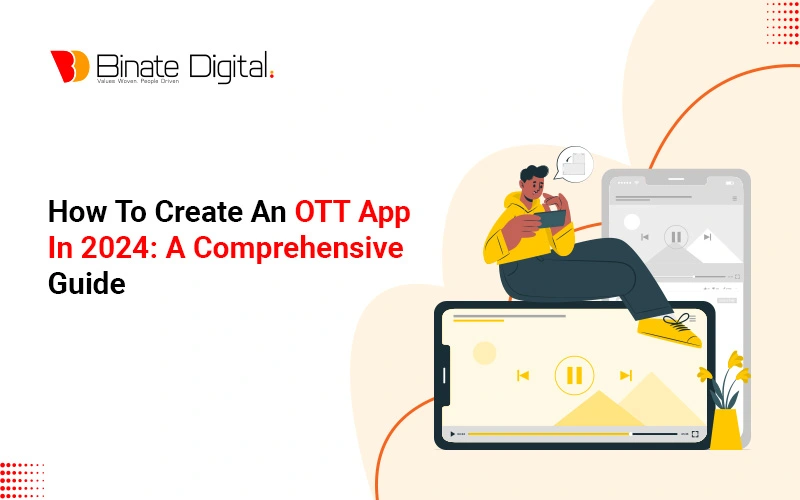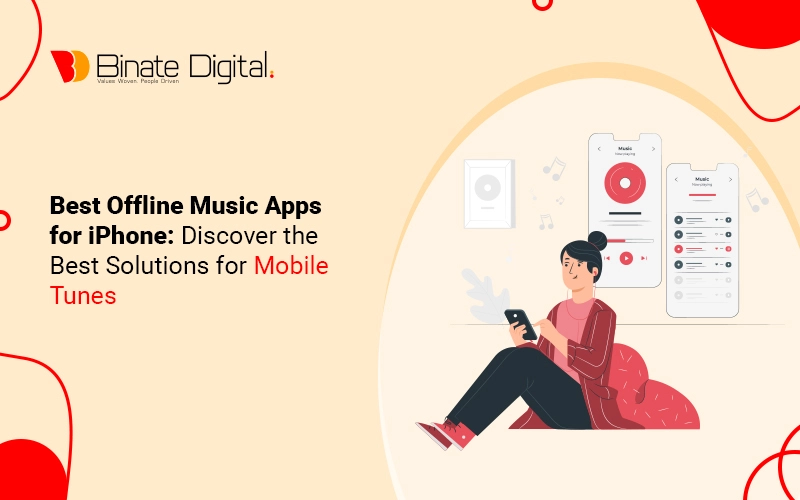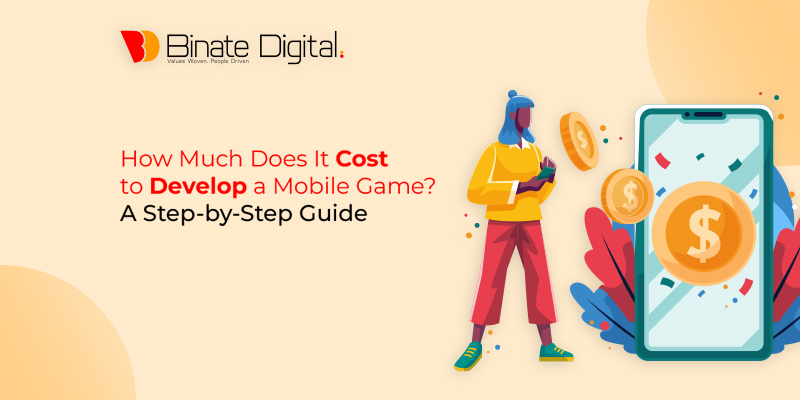The mass exodus from TV to OTT platforms is rampant, making TV an obsolete medium to consume content. The concept of the OTT platform has impacted massively traditional mediums for the consumption of content. OTT apps are now favored by the majority of content consumers, making OTT an over $275 billion industry.
This number is expected to be as big as $476 billion by 2027, so the potential for investors is colossal. As these apps bring convenience and a variety of content, people are allured into subscribing to one of their plans that gives them unlimited content.
In this blog, we are going to cover each and every step that is involved in creating OTT apps, giving you insights into the whole process of app creation, from thorough and rigorous brainstorming on the initial idea to design to bring to life with coding tech to testing and final deployment. Throughout the article, we will talk about strategic areas, and you will have to contemplate choices that directly impact the trajectory of your app’s success.
So, without further ado, let’s first dissect what exactly OTT apps are, and then we delve into the development process.
On this Article
What Exactly Are OTT Apps?
Let’s start with dissecting the terminology “OTT apps.” OTT stands for “over the top,” meaning bringing content to you via the internet, bypassing traditional mediums. If you are wondering about some of the examples to have a crystal clear understanding of these, everyone knows about Netflix, even if you don’t pay recurring costs.
Netflix, Amazon Prime, HBO Max, Disney+, Hulu, and YouTube are OTT platforms in the video-based space. Platforms like Spotify and SoundCloud are considered OTT apps in the audio streaming space for music, podcasts, etc. Even WhatsApp, Telegram, Slack, and Signal are considered OTT apps in the communication space.
The Development Process
The development process is very much like conventional development, involving brainstorming, designing, developing, testing, deployment, etc., but a little more work-intensive and coding-intensive.
Defining Your OTT App
This would be like keeping the early bricks of the fortress; if you don’t do research well and just directly dive into creating an OTT app, your efforts are going in vain. That is why you should carefully consider which niche you want your app to serve. You may create an app offering a gamut of content variety, and you can be niche-specific and target a certain small plethora and build upon that.
Market research is paramount to ensuring the success of your app, as there are already many giants operating in this OTT realm. Understand the market dynamics and try to find a gap or untapped topic on which an OTT app has been developed. It is true that the tendency toward TV has declined, but it does not take users a minute to cancel a mundane and redundant concept.
Production and Procurement of Content
So it is not going to be the case that you get a really high-performing app, and there is not that; the canvas is blank, and now users are waiting for you to release something on the platforms. Now, there are two ways to get content on your platform: either you put in your money and produce it yourself, or you manage to roll out the content released by the director and producers, and now, when the run of the film is finished, you can upload it on your platform because it is not going to be of any use to that director or producer.
So you kind of become the platform that releases movies and web series already released by others, and you are giving a chance to the people who have not watched them. If you go for production, you would need an enormous budget as you would have to produce a lot of content to keep users engaged on our platform, and the stakes would be high. If you have gone niche-specific, gather all the movies, web series, and documentaries of that genre.
Business Model
Now, strategize on how you would want users to pay. There are primarily four business models to choose from, i.e., AVOD, SVOD, TVOD, and hybrid. You would need to evaluate them accordingly and choose one of them to make your OTT platform sustainable.
Let us briefly describe all the business models for you.
- First is AVOD; in this business model, you generate revenue through ads. Such OTT platforms have to be free to garner users, and then ads become the sole revenue stream. Top examples would be platforms like Pluto TV, Xumo, Tubi, etc.
- The second is SVOD; in this business model, you set tier-based subscriptions, which users select from and pay for to have access to. Top examples would be Netflix, HBO, Apple TV+, etc.
- TVOD: In this model, users either rent content or buy it. This model is recognized as PPV (pay-per-view) and PPD (pay-per-download). Top examples would be iTunes, CinemaNow, UFC., etc.
- Hybrid Models: This model is a synergy of SVOD and TVOD. In this model, customers pay comparatively fewer fees and can access the content but have to endure ads in between streams. The top example would be Disney+.
Selection of Platform
There are primarily two main platforms, i.e., iOS and Android, or you have cross-platform at your disposal. The decision is very critical, as it impacts your potential user base. There are more Android devices than iOS devices, and your decision directly impacts a lot of factors, like customer acquisition. There is the notion that iOS users are better in terms of paying for subscription-based services.
This decision would also be dependent on the business model you choose. If you are aiming to show ads, then iOS might be the perfect choice, and you may want to choose Android. One has decided that there are hundreds of companies and agencies online that you can work with. But again, as it is going to be a big app and stakes would be high, you can go with a mediocre company offering you lower rates as a whole, which would impact the overall success of the app.
Development
Now comes the time to write the meat of your app. If you are writing code yourself, make sure you are using the latest technologies and tech stacks. If you are designing with top tools, you can properly depict your vision in the design.
When it comes time to develop a frontend, use tools for frontend frameworks. In this whole development process, you would cover a lot of things like design, wireframing, frontend development, backend development, payment gateway integration, user authentication, and a lot of other things. Use top mobile frameworks like React Native, Flutter, etc., based on the platform you are creating the app for. Also, when it comes to the backend, employ advanced technologies like Java, NodeJS, etc.
When it comes to the payment gateway, incorporate all the top payment gateways so your users don’t have to click the back button just because they can’t pay when they really want to.
Speaking of users, use top practices and ensure robust and strict user authentication that ensures top-notch security and keeps privacy intact, saving users from breaches, exploitations, and unauthorized access. Ensure the security of the app is stringent so there are no bugs, breaches, or loopholes that can possibly affect the security of the app and exploit users’ data and the whole app.
Testing, QA, and Launch
Once you are done writing the code, now is the time to thoroughly and rigorously check your app and employ various top testing methodologies to ensure your app is secure and there are no glitches or performance issues. Once you are fully satisfied and have thoroughly checked the whole app, now is the time to launch it to ensure you are in compliance with top guidelines and following top practices to ensure app stores don’t refuse to publish your app.
Post-Launch Support
The actual exam of the app starts once it is rolled out to the public, and then you are required to optimize and make changes accordingly as you get user feedback. Once you start getting users, the test of withstanding a massive load gives you insight and becomes the optimization driving factor. Over time, you have to do audits and regular updates, and you have to keep ensuring the app is flawless, and there are no glitches or slowdowns in the app.
Over time, with the arrival of new technologies, you have to employ them for better and higher performance.
Marketing and Promotion
Now, nobody would know on their own that a new app has been rolled out in the app store and would go like, “Let’s check it out.” It is you who has to give it the spotlight and make it humongous to the public. For marketing, be strategic with our approach and choose the mediums you think your target audience will correctly and properly target. Today, there are myriad channels available, giving you the leverage to expose your product to the point that they don’t mind putting it in mobile apps.
People tend to confuse on-demand service apps with OTT platforms; let’s get insights into their development costs.
OTT Platform Development Services
If you find the whole OTT platform development services process overwhelming and intimidating, you can hire a software company experienced in creating such apps. There are a gazillion of companies out there that you can employ to create your app. In the consultation phase, they will clear the ambiguity and gather crystal clear requirements, set out on designing, developing, and testing, and will have your back in deploying your app.
As you need them afterward for daily updates, code reviews, audits, optimization, and everything else, you can have a contract with the company for longer-term services. But if things become big and you start working on a large scale, you will eventually have to build a team that is going to take care of your app, and that team will be at the helm of your app.
On-Demand Service Apps vs OTT Platforms
OTT apps are streaming apps that span apps like Netflix, Amazon Prime Video, Hulu, Spotify, etc., that are actually going past the traditional channels to deliver content to you, and there happens to be so much variety in the content, letting people enjoy it on devices they prefer. On the other hand, on-demand service apps are apps like Uber, Uber Eats, Lyft, DoorDash, etc.
These apps are service-based in nature and deliver products or kind of service. You may argue Netflix and other OTT apps are giving service, but the whole model and kind of offering are on the end of the spectrum.
On Demand App Development vs OTT App Development
Both on-demand app development and OTT app development are extensive processes, requiring you to take a deliberately strategic approach as the stakes have been higher before than today. The investment required is colossal, and the chances of failure are higher. Also, you are going to bring a paradigm shift, accruing users to your platform, which users barely do until the product and content are exceptionally well done.
The performance of OTT platforms cannot be compromised at all, considering their users spend more time on OTT apps. That is why high performance decides the fate of such apps. On the other hand, the OTT on-demand apps have users using them when they have to order something that is a matter of a few minutes. That is why the development of OTT platforms demands developers to be absolutely flawless and smart, employing techniques that withstand the heavy load and tackle congestion.
Conclusion
OTT platforms are a lucrative business model considering the convenience they bring to users and everything. Precisely developed apps will define the trajectory of your app. The development of OTT apps requires a thoroughly planned strategy, not just a development strategy but also a financial strategy because such large apps eat into your finances to stand firm on their feet, and such apps happen to invite investors for future development of the app. You just can’t dive right into development thinking that whatever the product is, it will be a success.







